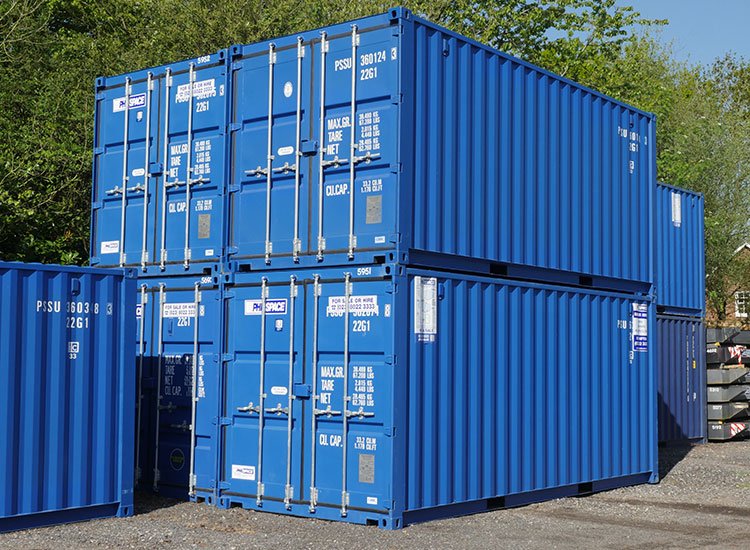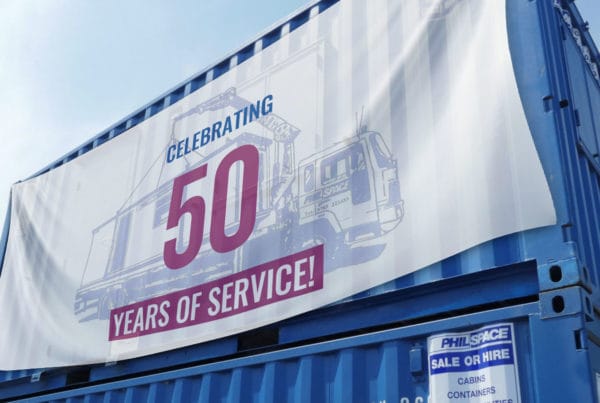SHIPPING CONTAINER FACTS
Shipping containers aren't the boring metal boxes you thought them to be. Here are some interesting facts about them that would change the way you look at them!
We’ve all encountered shipping containers in some form or the other. There may have been times when you’ve seen one and not even recognised it! But for something this ubiquitous, how much do you know about them?
Not much, we’re sure…
This is why we compiled a list of 20 fun facts about shipping containers. Let’s see how many of these you knew, and which one you like the most.

1. Created by Malcolm McLean
Malcolm McLean first created shipping containers in 1955. McLean wanted to find a more efficient way of shipment handling than the break-bulk style that was prevalent at the time. His container style was revolutionary as it incorporated external corners for easy stacking and lifting.
The best part? He gave away the patent for free so everyone could use them.
2. 20 Million Containers Travelling at Any Given Time
At any given time, about 20 million shipping containers are travelling the high seas on ships. There’s a possibility that a shipping container is better travelled than you!
3. Owned or Leased?
Just about 50% of all shipping containers are owned by shipping companies. The rest of them are leased, with the lease running for a year to ten years.
4. Cold Goods
Temperature-sensitive cargo is moved in reefer containers. These are sealed containers that can sustain a temperature. An interesting fact about reefer containers – they are no refrigerators, so they don’t create cool air! Instead, they are quite efficient at keeping the temperature constant and circulating the cool air around.
5. TEU?
Shipping containers have a standard size – 20 feet (also known as a Twenty-foot Equivalent Unit, or a TEU) or 40 feet (which is two TEUs!).
6. Volume
A standard 20-foot container has a volume of 1,170 cubic feet. A 40-foot container, on the other hand, has a capacity of 2,700 cubic feet.
7. Bananas for Scale
It takes around 15,000 shipping containers to contain 745 million bananas. All 15,000 of them can be loaded on to a big container ship. The number of spiders hiding in those bananas remains unknown.
8. Tracking Shipping Containers
The only shipping line that has GPS equipped on every one of its 27,000 reefer shipping containers is Maersk. That doesn’t mean you can’t track the rest at all…
9. Manual Tracking
Every commercial shipping container is assigned a unique unit number. This is made up of a 4-digit prefix, where the first three digits signify the owner, and the fourth denotes the category, usually a ‘U’ to signify ‘unit freight container’. A 6-digit serial number and a check digit, which is calculated using a mathematical formula, follow this prefix. With this identification tag, you can track the container’s location as it travels across the world.
10. Made in China
About 97% of all shipping containers are made in China. There are two reasons for this. One, labour is cheap so it makes sense to produce them there, to keep costs low. Two, since China exports a lot of the world’s products, it is most efficient to produce the containers there instead of producing them somewhere else and then transporting them (empty, we might add) to where the goods are.
11. Durable
If properly cared for, shipping containers can last over 30 years quite easily. Moreover, 40’ containers tend to last longer than 20’ ones as the former aren’t always packed to their limit.
12. Not Just for Shipping
Shipping containers are so durable that it makes no sense to dispose of them after they’ve fulfilled their purpose. That might be why used containers are being utilised as swimming pools, shops (Boxpark, anyone?), clinics for disaster relief, instant classrooms, and even an entire city.
13. Unchecked Containers
With such huge numbers being moved around every day, it is no surprise that shipping containers aren’t always checked properly. In fact, it is estimated that only 2% to 10% of containers are inspected at all!
14. Lost at Sea
Every year, ships lose containers at sea, whether due to bad weather or accidents. Experts believe that 2,000 to 10,000 are lost annually.
15. Unsinkable?
Fun fact: Containers that fall off of ships don’t always sink! Most of them float. Unfortunately, they float just below the surface of the water, which means they aren’t visible to sailing vessels. These ninja containers end up damaging any vessels unfortunate enough to cross their paths.
16. Not Completely Unsinkable
It’s not all doom and gloom with floating shipping containers. They do sink… eventually! It is estimated that a 20’ container will float for up to 57 days, while a 40’ one will sink after around 171 days.
17. Sometimes They Come Back…
There have been instances where a shipping container has been lost at sea, but its contents find their way to land. Sometimes, the contents are hazardous pollutants, and other times, they turn out to be rubber ducks.
18. Exporting Fresh Air
Nothing highlights the discrepancy in the import and export quantities of the UK better than the number of containers that come in full and go out empty. As this iNews article says, our biggest export is fresh air!
19. ISO Tanks
While not your standard shipping container, ISO tanks are shipping containers for liquids. Did you know that once a tank is tagged to carry food, you couldn’t use it to carry any other type of cargo?
20. Chemical Considerations
As with food, tanks that are tagged for chemical transport cannot be used for anything else. What’s more, the type of chemical you could transport in one depends on the last three chemicals it was used for!
So there you go, here is our list of 20 interesting facts about shipping containers. We hope that this will change the way you look at them when you look for containers for your shipping needs. In fact, check out our range of shipping containers or get in touch if you need more information.



